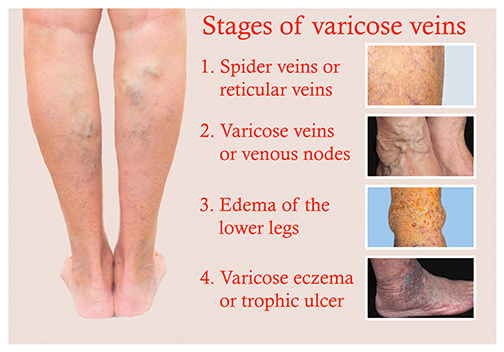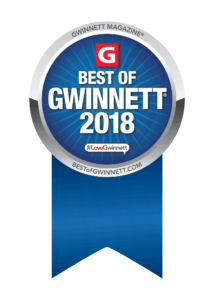Varicose veins aren’t just a cosmetic concern, associated with aging. Since they hinder blood circulation, they jeopardize health. Dr. Amish Tilara offers painless treatments to eliminate them, with rapid recovery. Here’s an overview of varicose veins and how Dr. Tilara can help you.
Weak Valves
Your veins contain one-way valves, designed to close and prevent blood from flowing backward. When vein walls lose elasticity, valves become weak and don’t fully shut. Then, leaking blood collects within veins, making them bulge and twist.
Leg veins are most prone to valve malfunction since they’re farthest away from the heart. At their distant location, gravity exerts a greater pull on blood, hampering upward flow.
Abdominal Pressure
The medical term for weak valves is venous insufficiency. Faulty valves are sometimes traced to abdominal pressure, related to constipation, being overweight, and tight-fitting clothing.
Gender
Women are more vulnerable than men, possibly due to female hormones causing veins to lose strength. In this regard, hormone replacement therapy and birth control medications may be contributory.
Likewise influential is pregnancy. During fetal development, a woman’s blood volume increases. The additional force against blood vessel walls enlarges them. Pregnancy hormones further stretch vein walls. As a mother’s uterus expands to accommodate her baby, pressure mounts against pelvic veins.
Other predisposing factors are a family history, being age 50+, and standing in place for long periods.
Primary Signs and Symptoms
The most apparent sign of venous insufficiency is leg veins that are bulging, gnarled, swollen, and purple or dark blue. Such coloration indicates that blood lacks adequate oxygen. Blood pooling in the ankles and feet makes them swell.
The legs may feel achy, heavy, and restless, especially at night. They may also cramp, throb, and itch.
Skin Abnormalities
Ankle skin may develop white patches, resembling scar tissue. Just above the ankles, skin may become taut, due to the hardening of underlying fat. The skin surrounding varicose veins can be shiny.
Eczema can also emerge, in the form of red, itchy, and dry skin patches. If you incur a leg injury, it may take longer for blood to clot and bruises to heal.
Spider veins may arise, as small blue or red veins in branching patterns. They can appear on both the legs and face. Although spider veins are dilated like varicose veins, they’re thinner and more superficial.
Complications
When vein inflammation is severe, skin sores or ulcers may evolve. Bumping or shaving your leg can tear a vein, and make it bleed.
Varicose veins close to the skin surface can lead to clots, termed superficial thrombophlebitis. Signs of a clot or thrombus are vein tenderness and pain. The overlying skin may appear red and firm. This cluster of symptoms can also represent venous infection.
When a clot forms in a deep vein of the arm or leg, thrombophlebitis is life-threatening. Portions of a thrombus can break off and travel to the heart and lungs, blocking blood from entering the organs. Symptoms of deep vein thrombophlebitis are chest pain and difficulty breathing, requiring immediate hospital treatment.
Diagnosis
 During your consultation with Dr. Tilara, he will examine you both standing and seated, and ask about your symptoms. The doctor may also order or conduct diagnostic tests. Doppler ultrasound translates sound waves into pictures, to assess the direction of venous blood flow, vein obstruction, and clots. Color duplex ultrasound creates color images, measures blood speed, and finds deep vein clots.
During your consultation with Dr. Tilara, he will examine you both standing and seated, and ask about your symptoms. The doctor may also order or conduct diagnostic tests. Doppler ultrasound translates sound waves into pictures, to assess the direction of venous blood flow, vein obstruction, and clots. Color duplex ultrasound creates color images, measures blood speed, and finds deep vein clots.
For both these painless procedures, a device applied to your leg delivers and receives sound waves. Then, a computer converts them into images, displaying the blood in your arteries and veins. When results of duplex ultrasound are unclear, magnetic resonance venography clarifies a diagnosis.
Treatments
Except for severe cases, Dr. Tilara performs five advanced techniques, rather than vein stripping:
Sclerotherapy – For small to medium-sized varicose veins, sclerotherapy uses a chemical to scar and close them. Subsequently, the veins fade within a few weeks.
Microsclerotherapy – A very thin needle delivers a scarring chemical, eliminating small varicose and spider veins.
Endovenous Ablation Therapy – Radio waves or lasers generate heat to seal large varicose veins. After numbing the area with anesthetic, Dr. Tilara makes a tiny skin cut near the vein. He then inserts a small tube called a catheter into the vessel. A probe at the catheter tip heats the vein, making it collapse and seal.
Endoscopic Vein Surgery – This treatment targets varicose veins and associated skin sores. Through a small cut near the involved vein, Dr. Tilara inserts a catheter equipped with a camera. At the end of the camera, he uses a surgical instrument to close the vein.
Ambulatory Phlebectomy – This procedure removes small varicose veins close to the skin surface. Dr. Tilara makes minor skin cuts, by which he extracts the veins with a specialized instrument. Immediately afterward, patients can walk, and most return to normal activities and work within one day. Stitches aren’t necessary, and scars are practically invisible.
Prevention
To prevent future varicose veins, take precautions with your diet, clothing, posture, activities, and weight.
Diet – Avoid drinking alcohol, as it dilates veins. To prevent constipation, eat fiber-rich foods. Also, drink a daily volume of water equal to half your body weight. For example, if you weigh 150 pounds, drink 75 ounces of water per day.
Clothing – Wear loose-fitting attire, especially around your waist, groin, and legs. If you typically wear high-heeled shoes, switch to flats. Low heels prompt your calf muscles to contract, pumping blood back to your heart. Dr. Tilara may suggest wearing compression stockings. This specialized hosiery is snug around the ankles, exerting gentle upward pressure. This design counteracts the effect of gravity on sluggish blood flow.
Posture – If you mostly sit or stand during the day, take breaks every half-hour, and walk for five minutes. When seated, refrain from crossing your legs, and periodically flex your ankles. These three actions will help maintain your blood circulation. Avoid dangling your legs without support. When seated at home, elevate your legs on a hassock for 30 minutes.
Activities – Do a fun form of exercise for 30 minutes daily, such as dancing, walking, swimming, or biking. Divide the half-hour into three 10-minute segments, if you find that easier. Rather than taking elevators and escalators, use staircases.
Weight Loss – Losing extra pounds eases vein pressure and improves blood flow.
Healthy Circulation
Amish Tilara, M.D. has the education, skills, and experience to resolve vein pathology, without major surgery. Board certified in vascular and interventional radiology, he specializes in painless techniques that yield excellent outcomes. Here are patient testimonies, vouching for his precise skill and kind bedside manner.
Atlanta Vascular and Vein Center is located in Lawrenceville, Georgia. We serve Atlanta and its neighboring towns, including Snellville, Conyers, Monroe, Marietta, Roswell, Alpharetta, Duluth, Buford, and Winder. Please call us at (678) 878-4555 to schedule a consultation. You can also email us here.
Varicose veins feel uncomfortable, are unattractive, impair circulation, and threaten health. However, with Dr. Tilara’s expert care, you’ll soon feel better!
Note – This blog is provided for educational purposes and cannot substitute for professional medical care. To address vein problems, contact Amish Tilara, M.D. at Atlanta Vascular and Vein Center.
© 2017 Atlanta Vascular & Vein Center. All rights reserved.








